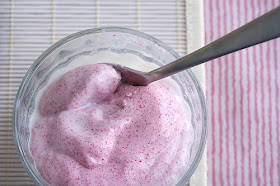Priecīgus Ziemassvētkus! Linksmų Kalėdų! Häid jõule!
This
5th edition of the series comes on the heels of the centennial year
for the three Baltic countries, and I hope we’ve captured the celebratory sprit
as well as our eternal pride in our heritage over the course of the past month.
I’m forever grateful to everyone who has contributed: in the form of posts,
photographs, illustrations, interviews and ideas. As to the readers, the
friends who commented and translated, and those who put me in contact with
bloggers and authors all over the world, a heartfelt thank you as the series
would not have been a success without you. A special mention to artist ZILGMA
for the uniquely Baltic logo that is the face of the series, and to Roberts and
my boys for their patience with me while I worked on the perpetual tasks vital to
24 Days of a Baltic Christmas.
I
hope that you’ve enjoyed the series! If you tried one of the recipes, fashioned
a craft, perused the calendar and gift guide, or just read your way through the
Baltics this month, I hope you’ll leave a review on the Facebook page, as well
as bookmark the page for next year. We are always taking suggestions of topics and
contributors as well, please get in touch with any questions and comments!
 |
| Photo: Katram savu tautastērpu |
On
this final day of 24 Days of a Baltic Christmas, a look back at all the wonderful
contributions we’ve seen this month. We kicked off 24 Days of a Baltic
Christmas with a short introduction, then on Day 2 took a look at some of the
Estonian, Latvian and Lithuanian Christmas markets taking place across the US,
Canada, Australia and Europe.
On
Day 3, a 24 Days Baltic Holiday Checklist, full of activities to help fill your
days with holiday cheer. On the 4th Day of a Baltic Christmas we welcomed
Baltic Imports with a gift guide; from something to bring the hostess of the
next holiday party, to gifts for the Balts on your Christmas list, the 2018 24 Days Baltic Gift Guide has it all.
 |
| Sauerkraut, 2 ways via LatvianEats |
Food
blogger Latvian Eats joined us on Day 5 with a seasonal favorite, sauerkraut –
not one, but two ways! Then on Day 6 we featured author
Sandra from blog VeganSandra with a vegan alternative to the Estonian Christmas dinner favorite, blood sausage.
 |
| Vegan blood sausage via VeganSandra |
Day 7 was a collection of Lithuanian, Latvian and Estonian blogs, Facebook and
Instagram pages, Pinterest boards, and other websites with spectacular Baltic
landscapes and plenty of holiday cheer! Then we hopped up to Washington on Day
8 with artist Kristi O and her miniature mushrooms, a product of her creative
talents and Estonian heritage.
 |
| Kristi O's mushrooms |
Day
9 brought a collection of Baltic-inspired crafts. Then the essay “The Infinite Manifestations of Home” on Day 10 from contributor Ērika Veidis, a Latvian living in the United States.
 |
| Ērika Veidis on the Infinite Manifestations of Home |
 |
| Nine years of Yule dinner in Estonia, via Tulen Loobin Su Katusele Kive |
Annika,
of the blog Tulen Loobin Su Katusele Kive joined us on Day 11 with a
photographic journey through nine years of Estonian Yule dinners. Then on Day
12 we welcomed Margaret of the blog Balt in the box room with her fish tale of
the pitfalls of buying a carp for Christmas.
 |
| The pitfalls of buying a carp for Christmas, via Balt in a box room |
On
Day 13 of the series we welcomed Baņuta Rubess with her article Dec. 21: Lighten Up! concerning the Latvian tradition of pulling the log on winter
solstice. Then on Day 14, An ode to verivorstid from another new contributor,
Andres Simonson, courtesy of Estonian World.
 |
| An ode to verivortid! |
On
Day 15 we made tin can lanterns to celebrate the arrival of the Peace Light,
the live flame that travels the world sharing its message of peace and hope.
Then we discussed the similarities and differences of the Lithuanian and
Latvian Christmas dinners on Day 16, comparing the food traditions of Kūčios and Ziemassvētki. On Day 17 we welcomed back contributor
Kristīna, as she deciphered the mystery of candied cranberries; you can find
her recipe for dzērveņu dzirksteles (cranberry sparks) here.
 |
| Kristīnas cranberry sparks |
We
journeyed into the world of Baltic libations with a miniseries during the third
week of the series. Beginning with Lithuanian krupnikas on Day 18, then black currant liqueur on Day 19, and finally Tāle's Sunshine Coast Black Balsam recipe on Day 20!
 |
| Tāles Sunshine Coast Black Balsam |
 |
| source: Wikipedia commons |
On
Day 21 we celebrated the winter solstice with a collection of resources
concerning the traditions on this longest night of the year. Food blogger
Isabelle from Crumb: A Food Blog joined the series on Day 22 with her post
Debesmannā.
 |
| Debesmannā via Crumb: A Food Blog |
Finally on Day 23, we featured J. Daugirdas of Draugas News with his translation of Kalėdinė and the Magic Harmonica, the Lithuanian story of magical Kūčios night.
I
hope you enjoyed the fifth year of 24 Days of a Baltic Christmas! We’re thankful
to once again have been a part of your holiday preparations, and hope you found
some Yule/Ziemassvētki/Kūčios spirit here on Femme au Foyer. I wish you and
yours a very merry Christmas, and all the best in 2019.
Until
next year,
Your
Femme au Foyer



















